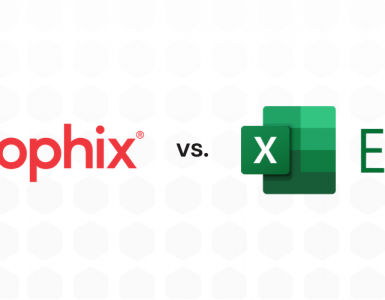It is still rare for Corporate Performance Management (CPM) applications, such as planning and budgeting, to be carried out in the Cloud. But why is this? BARC analyst, Dr. Christian Fuchs, explains why many companies are reluctant to migrate to the Cloud and where the benefits of Cloud solutions lie.
As with so many trend discussions and technological breakthroughs, the debate around the Cloud is also highly polarizing: for some, it is the IT approach of the future and for others, it is the end of corporate IT. As is so often the case, the truth is somewhere in between.
Status Quo and Challenges
More than a decade ago, Salesforce.com began to make the Cloud computing approach accessible, launching one of the first front office applications on the market. This success spawned a host of imitators, including business intelligence (BI), CPM, and data management. The fact is, however, that CPM tools are much less likely to be used via the Cloud than solutions for reporting, analytics, or data discovery (see Figure 1).
 Figure 1: What are the most common applications for Cloud BI in your company? (Source: BARC study “BI and Data Management in the Cloud”, n=164)
Figure 1: What are the most common applications for Cloud BI in your company? (Source: BARC study “BI and Data Management in the Cloud”, n=164)
Following the motto “never change a running system”, many companies put their faith in on-premise solutions, especially in the SME sector. The main reason for this is serious security concerns when it comes to using strategically relevant (financial) data and the associated high demands on the data security of CPM systems (see Figure 2). Also, legal concerns typically relate to data protection and data security, underscoring the massive “braking effect” of these issues on the use of CPM solutions in the Cloud. The comparatively small number of respondents citing corporate policy as a hurdle confirms that the use of Cloud for CPM today has become more of a business decision than a political one. Experience shows that Cloud usage is significantly higher especially among new customers of CPM solutions than companies that already have these solutions in use and would have to migrate.
 Figure 2: Top 3 reasons not to use CPM via a Cloud-based solution (source: BARC study “Corporate Performance Management in the Age of Digitalization”, n=153)
Figure 2: Top 3 reasons not to use CPM via a Cloud-based solution (source: BARC study “Corporate Performance Management in the Age of Digitalization”, n=153)
Applications for CPM in the Cloud
CPM projects with potentially higher numbers of users in decentralized, distributed scenarios are often predestined for implementation using the Cloud (see Figure 1). The more applications are viewed as “critical”, the less companies seem to prefer CPM solutions in the Cloud (see, for example, financial planning). The difference in the use of financial planning to that of operational planning and forecasting leads to the conclusion that Cloud solutions are more often used as a supplement to on-premise solutions. For example, data collection for operational planning may be organized in the Cloud.
 Figure 3: Top 5 applications for CPM in the Cloud (source: BARC study “Corporate Performance Management in the Age of Digitalization”, n=45)
Figure 3: Top 5 applications for CPM in the Cloud (source: BARC study “Corporate Performance Management in the Age of Digitalization”, n=45)
The Main Benefits of the Cloud
From a market perspective, Cloud-based software offerings have now also been established for CPM sub-areas such as planning and budgeting. These are often based on a Software as a Service (SaaS) model, in which the supplier provides, fully installs, and configures the application software, in addition to the infrastructure, allowing for faster deployment. While some software vendors offer their solutions only through the Cloud, most of them adopt a hybrid approach. This leaves the customer free to decide whether to source the solution via the Cloud or implement it on-premise.
The most obvious advantage of a Cloud solution is certainly the low demand for IT resources. In particular, the operation and maintenance of hardware and software often fall outside the core competencies of companies. A Cloud approach offers even more benefits, however, which can certainly be significant depending on the task.
The 5 biggest advantages are the following:
- Speed (time to value): Cloud-based CPM solutions can usually be used immediately. Lengthy hardware procurement or installation times are eliminated, which can accelerate implementation massively.
- Scalability (users and data): Peak usage times with many concurrent users can be cushioned by connecting to flexible hardware resources in the Cloud (CPU, memory etc.).
- Currentness (updates and maintenance): Sourcing a CPM solution through the Cloud ensures that the solution is always updated to the newest release and allows you, as a customer, to always work with the latest functionality.
- Security (data security and backups): Cloud data centers are high-security facilities. This applies in particular to building security, fire protection, access control, availability, data protection, data security, and fault management. CPM Cloud services are generally much more secure than a company’s own IT services, especially among SMEs.
- Investment: Service-based CPM rental models do not require high initial investments (CAPEX) with the definition of the depreciation period and additional annual maintenance fees. Settlement usually takes place annually and is fully charged as an expense (OPEX).
Conclusion
The market is ripe and now is the time to evaluate a CPM operation in the Cloud with an open mind. If companies are launching new products and carrying out major changes as part of their digitalization strategy, they should carefully check that the Cloud does not offer significant advantages over on-premise solutions. Experience has shown BARC that many small and medium-sized enterprises are unable to cope with operating a data center. A migration to the Cloud offers clear advantages here.
However, it must be mentioned that the Cloud is not suitable for all purposes. Weak connectivity due to insufficient bandwidth or unstable networks, mixed platforms with Cloud and on-premise systems, and the often higher price for long-term use with a stable number of users can be a particular challenge for companies.






